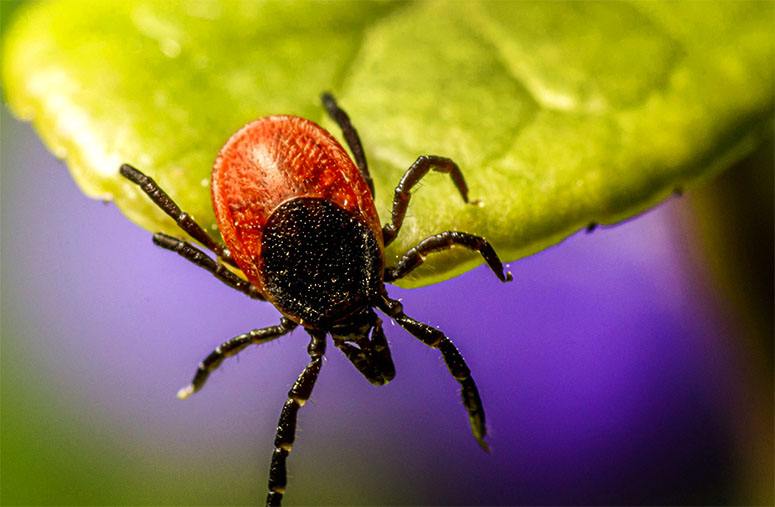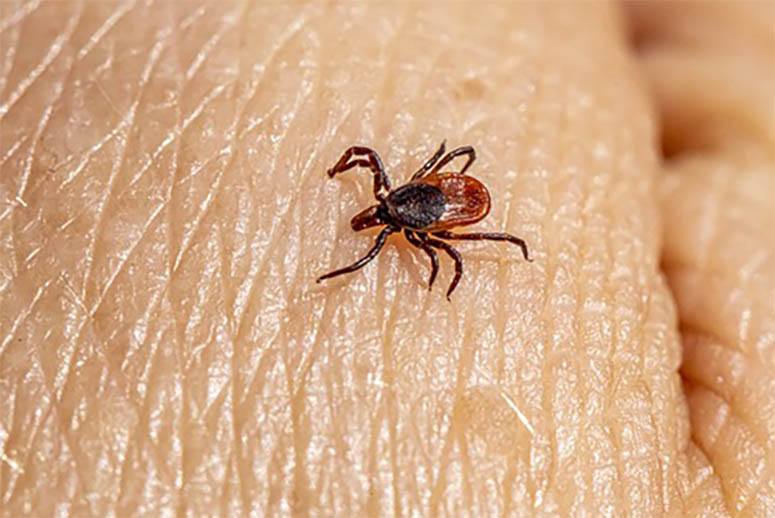Contents
Lyme disease is a tick-borne illness that can result in significant health complications if left untreated.
This article examines the essential aspects of Lyme disease, including its symptoms—encompassing early manifestations to late-stage complications—transmission methods, and the likelihood of contracting the disease from a tick bite.
For instance, what are the odds of getting Lyme disease from a tick? Understanding this probability can help in making informed decisions about prevention and treatment.
It also offers critical guidance on the steps to take in the event of a tick bite.
A comprehensive understanding of Lyme disease is particularly important for outdoor enthusiasts and individuals residing in areas where ticks are prevalent.
What is Lyme disease?
Lyme disease, or Lyme borreliosis, is a tick-borne illness caused by the bacterium Borrelia burgdorferi. It is primarily transmitted to humans through the bites of infected deer ticks and nymph ticks.
This disease represents a significant public health concern due to its continued spread across various geographic locations, with increasing infection rates reported in endemic areas.
A comprehensive understanding of Lyme disease is essential, as it impacts not only individual health but also has broader implications for community health and public safety, particularly in rural regions where tick populations are prevalent.
What are the symptoms of Lyme disease?

The symptoms of Lyme disease exhibit considerable variability, encompassing early indicators that may be easily overlooked and more severe late-stage manifestations that can result in chronic illness if not addressed promptly.
Early symptoms typically include fever, fatigue, and the distinctive erythema migrans rash, whereas late symptoms may manifest as joint pain and neurological complications.
Timely recognition of these symptoms is essential for facilitating accurate diagnosis and effective treatment options, which play a significant role in determining healthcare access and outcomes for individuals affected by the disease.
1. Early symptoms
Early symptoms of Lyme disease typically present within a few days to weeks following a tick bite, with the most recognized symptom being erythema migrans, a distinctive rash resembling a ‘bull’s-eye.’
Other common early symptoms may include fever, chills, fatigue, and muscle aches, which can often be mistaken for flu-like illnesses, complicating timely diagnosis.
Recognizing these early symptoms is essential for effective intervention, as untreated Lyme disease can result in more severe complications, such as joint pain, neurological issues, and even cardiac problems.
For example, while fever and chills may appear benign, they can indicate the body’s response to the Lyme bacteria, necessitating immediate medical attention.
The experience of extreme fatigue can significantly affect daily activities, suggesting potential challenges ahead if not promptly addressed.
Furthermore, muscle aches can escalate into debilitating pain, highlighting the importance of awareness regarding these initial signs.
Delaying treatment not only prolongs discomfort but may also increase the risk of long-term health complications, making the prompt recognition and intervention of utmost importance.
2. Late symptoms
If Lyme disease remains untreated, late-stage symptoms may develop weeks to months following the initial infection, potentially leading to serious health complications such as joint pain, neurological issues, and carditis.
These late symptoms can significantly impact daily functioning and quality of life, often necessitating a more complex diagnostic and treatment approach.
As these chronic symptoms emerge, the risk of debilitating conditions increases, which may result in additional systemic complications that complicate treatment efforts.
Individuals may experience cognitive difficulties, severe fatigue, and mood disorders, which reflect the insidious nature of the infection.
The association between these late symptoms and Lyme disease highlights the urgency for early intervention – without prompt medical attention, the recovery process may become increasingly challenging.
Therefore, it is essential to recognize the signs of infection and seek medical advice at the first indication of Lyme disease, in order to prevent these potentially overwhelming health challenges.
How is Lyme disease transmitted?
Lyme disease is predominantly transmitted through the bites of infected ticks, specifically deer ticks and nymph ticks, which serve as the primary vectors for the Borrelia bacteria responsible for the infection.
The transmission process is closely associated with the tick life cycle and the environmental conditions that promote suitable tick habitats.
Consequently, public health initiatives are essential for managing exposure risks and preventing the incidence of infection.
What are the odds of getting Lyme disease from a tick?

The likelihood of contracting Lyme disease from a tick bite is influenced by several factors, including the geographic location of the tick encounter, the species of tick involved, the time of year, and the duration of tick attachment.
A comprehensive understanding of these variables is crucial for conducting an in-depth risk assessment and for the implementation of effective prevention strategies.
1. Geographic location
Geographic location is a critical factor in the risk of contracting Lyme disease, as certain regions, particularly endemic areas, exhibit higher prevalence rates due to increased tick populations and favorable environmental conditions. Surveillance data from public health agencies frequently emphasize these areas, providing valuable insights that inform prevention strategies.
For instance, the northeastern United States, particularly states such as Connecticut, Massachusetts, and New York, has reported significant incidences of Lyme disease, with over 10,000 confirmed cases during high-risk years.
Likewise, certain regions of the Upper Midwest, including Minnesota and Wisconsin, demonstrate concerning rates, with some counties reporting up to 18 cases per 100,000 residents annually.
These statistics highlight the urgent need for comprehensive public health initiatives centered on education, early detection, and community outreach in regions most affected by the disease.
By prioritizing efforts in these endemic areas, health authorities can effectively reduce risks and promote safer outdoor activities for both residents and visitors.
2. Tick species
Different tick species present varying levels of risk for the transmission of Lyme disease, with deer ticks (Ixodes scapularis) and nymph ticks identified as the primary vectors responsible for disseminating Borrelia bacteria.
A comprehensive understanding of the ecology of these tick species is essential for developing effective prevention and control measures.
These tick species inhabit a range of environments, commonly located in wooded areas, tall grasses, and shrubs, where they are likely to encounter their hosts, which include deer, rodents, and even domestic pets.
Their behavioral patterns, particularly questing—where they perch on vegetation in anticipation of a host—demonstrate their adaptability and survival strategies.
By analyzing their life cycles, one can gain valuable insights into their role in the transmission of pathogens. Implementing prevention strategies, such as habitat management and the use of protective clothing, can significantly mitigate the risk of exposure to these vectors, thereby protecting both human health and the integrity of ecosystems.
3. Time of year
The time of year plays a significant role in the risk of exposure to Lyme disease, as tick activity fluctuates with the seasons, with peak periods generally occurring in late spring and summer when outdoor activities are most prevalent.
Understanding these seasonal patterns enables individuals to take the necessary precautions to minimize their exposure risks.
During these elevated risk periods, when families are likely to engage in hiking, camping, or backyard barbecues, it is essential to remain vigilant.
Outdoor enthusiasts should consider wearing protective clothing—such as long sleeves and long pants, as well as light-colored fabrics to facilitate the easy detection of ticks—and utilizing EPA-approved insect repellents.
Additionally, adhering to marked trails, avoiding tall grass and dense vegetation, and conducting thorough tick checks after outdoor activities can significantly reduce the likelihood of ticks latching onto individuals.
By adopting a proactive approach during peak seasons, individuals can enjoy their preferred outdoor activities while prioritizing their health.
4. Tick attachment time
The duration of tick attachment is a critical factor in the risk of contracting Lyme disease. Research indicates that the longer a tick remains attached, the greater the likelihood of pathogen transmission.
This finding underscores the importance of early intervention and prompt tick removal.
Understanding this correlation is pivotal in mitigating the threat of Lyme disease. For example, studies demonstrate that if a tick is removed within the first 24 hours, the chances of acquiring the disease significantly decrease.
Additionally, awareness of other risk factors, such as geographical prevalence and the seasonal behaviors of ticks, can further enhance prevention efforts.
It is essential for individuals, particularly those engaging in outdoor activities, to conduct regular tick checks and take swift action if ticks are discovered.
Implementing these measures can substantially reduce infection rates and promote overall health.
5. Tick infection rate
The tick infection rate, which indicates the proportion of ticks carrying the Lyme disease pathogen, varies significantly by geographic distribution and can substantially influence the overall prevalence of the disease in specific regions.
Assessing these rates is essential for conducting accurate risk assessments and formulating effective public health strategies.
Understanding the determination of these infection rates requires an examination of various environmental factors, including climate, land use, and the presence of host animals that contribute to tick populations.
The implications of these rates extend beyond individual health, as they play a critical role in informing community awareness programs and guiding prevention measures.
Public health officials depend on data regarding geographic distribution to identify high-risk areas, which enables targeted interventions that can significantly mitigate the risk of Lyme disease transmission.
Therefore, maintaining an ongoing surveillance system for tick infection rates is crucial for adapting strategies that effectively address the evolving landscape of tick-borne diseases.
What should you do if you get bitten by a tick?

In case of a tick bite, it is essential to take prompt action to reduce the risk of Lyme disease infection.
Proper tick removal, vigilant monitoring for symptoms, and awareness of when to seek medical attention are critical factors that can significantly influence the outcomes of a potential infection.
1. Monitor for symptoms
Monitoring for symptoms following a tick bite is essential for the early intervention of Lyme disease, as the timely recognition of symptoms can facilitate more effective treatment and improve health outcomes.
Individuals should remain vigilant for signs such as fever, fatigue, and the characteristic rash.
It is advisable for individuals to monitor for these symptoms for a minimum of 30 days following a tick bite, as Lyme disease can present a diverse array of symptoms during this time.
Plus the common signs mentioned, other symptoms that warrant attention include:
- Headaches;
- Joint pain;
- Neurological issues such as facial palsy or numbness.
Access to healthcare is critical in these circumstances, as early diagnosis and treatment can prevent complications.
By promptly addressing these potential symptoms, individuals can seek medical advice and intervention when necessary, ultimately enhancing their prospects for a full recovery.
2. Seek medical attention
If symptoms indicative of Lyme disease arise following a tick bite, it is imperative to seek medical attention promptly, as early diagnosis can significantly enhance treatment outcomes and mitigate the risk of chronic symptoms.
Access to healthcare is a critical factor in this process.
During a consultation, individuals can expect a comprehensive evaluation of their medical history, which includes inquiries about recent outdoor activities or potential tick exposures.
The healthcare provider will likely ask about specific symptoms such as fever, fatigue, headaches, and the presence of characteristic rashes like erythema migrans.
Additionally, routine blood tests may be conducted to detect antibodies associated with Lyme disease, facilitating an accurate diagnosis.
Recognizing the potential range of symptoms, which may include joint pain and neurological issues, underscores the importance of addressing any concerns promptly, thereby ensuring that effective treatment can be initiated as soon as possible.
3. Get tested for Lyme disease
Undergoing testing for Lyme disease following a tick bite or upon the manifestation of symptoms is essential for ensuring accurate diagnosis and prompt treatment.
Laboratory evaluations, such as serological tests, give the power to healthcare professionals to confirm the presence of the Lyme disease pathogen and develop an appropriate treatment strategy.
Several diagnostic tests are available for this purpose, including enzyme-linked immunosorbent assays (ELISA) and Western blot tests.
These diagnostic tools are crucial, as they not only detect antibodies produced in response to the infection but also assist in distinguishing between active Lyme disease and previous infections.
Timely and accurate diagnosis is critical, as untreated Lyme disease may result in severe complications.
Therefore, a comprehensive understanding of the various testing methodologies is vital for both patients and healthcare providers, facilitating effective navigation of the complexities associated with Lyme disease and ultimately ensuring improved health outcomes.
Details about the chances of acquiring Lyme disease from a tick can be found in the FAQ further down this page.
Discover the enchanting world of probabilities and rare phenomena. Enhance your curiosity and expand your knowledge by exploring our articles at WhatAreTheOddsOf.NET.


